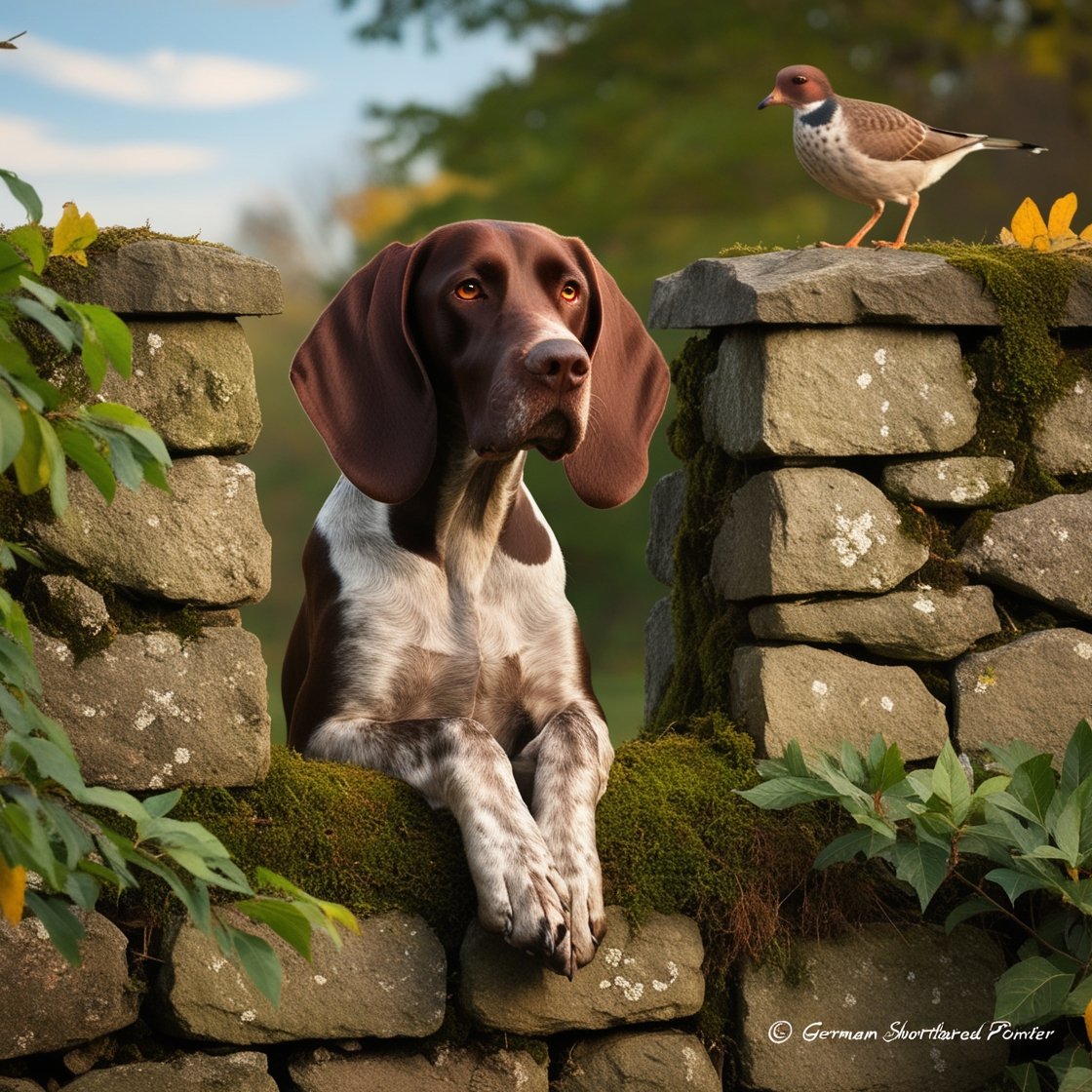“Streamlined Companions: The Best Short-Haired Hunting Dog Breeds for the Modern Hunter”
** Introduction to Short Haired Hunting Dog Breeds **
Short-haired hunting dog breeds are a top choice for hunters who value efficiency and ease of care. These dogs are known for their smooth, low-maintenance coats, making them ideal companions in the field. Whether you are trekking in dense forests or wide open plains, a short-haired hunting dog will not bother you with excessive grooming needs or heavy shedding.
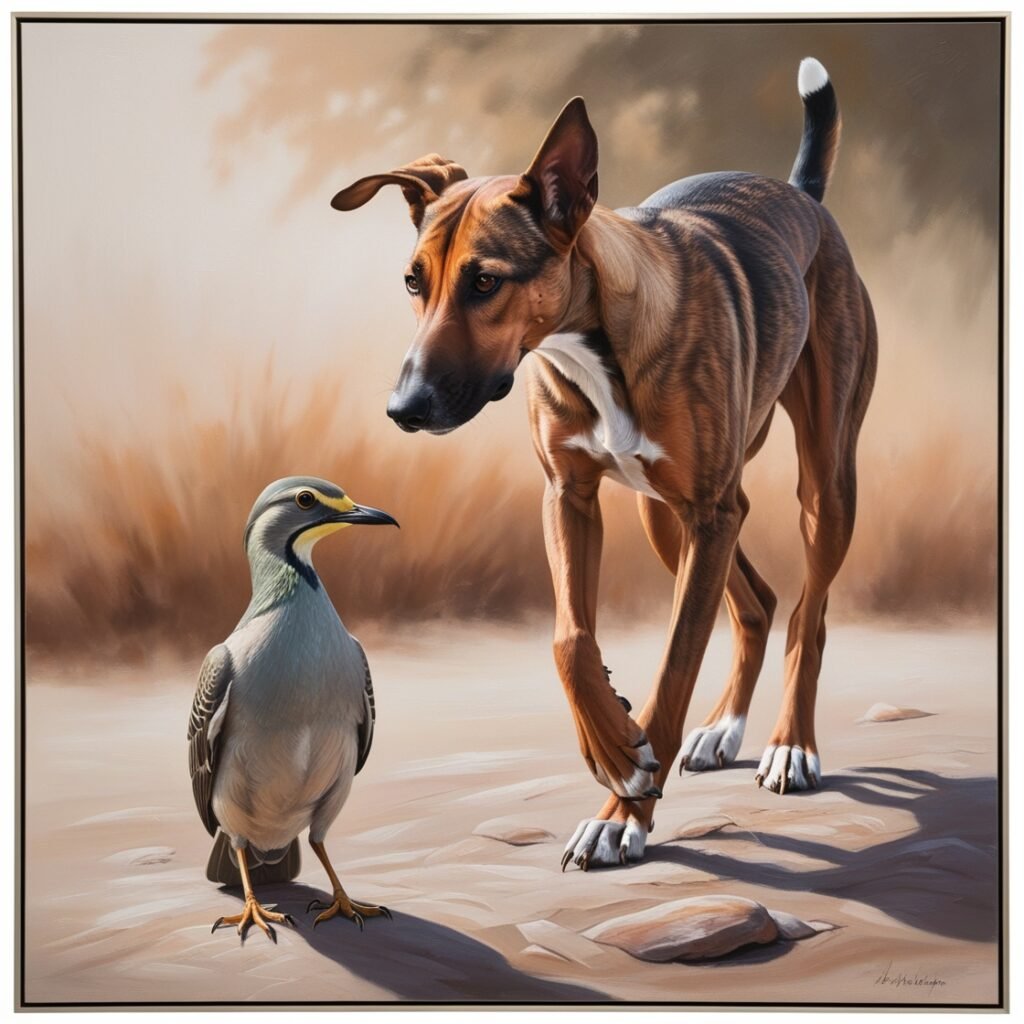
Hunting dog breeds short hair
Breeds like the German Shorthaired Pointer, Vizsla and Weimaraner are celebrated for their agility, speed and keen senses. Their short coats not only help them stay cool during intense hunting but also reduce the risk of becoming entangled in bushes or collecting debris. This makes them particularly suitable for hunters who need a reliable, no-fuss companion.
In addition to their physical characteristics, these dogs are known for their intelligence and trainability. They have a strong tendency to please, which makes them quick learners in the field. Whether you’re an experienced hunter or new to the sport, short-haired hunting dog breeds can provide the perfect balance of performance and practicality. If you’re considering adding a new member to your hunting team, exploring these smooth, efficient breeds is a great place to start.
Top 10 Short-Haired Hunting Dog Breeds ;
1. German Shorthaired Pointer :
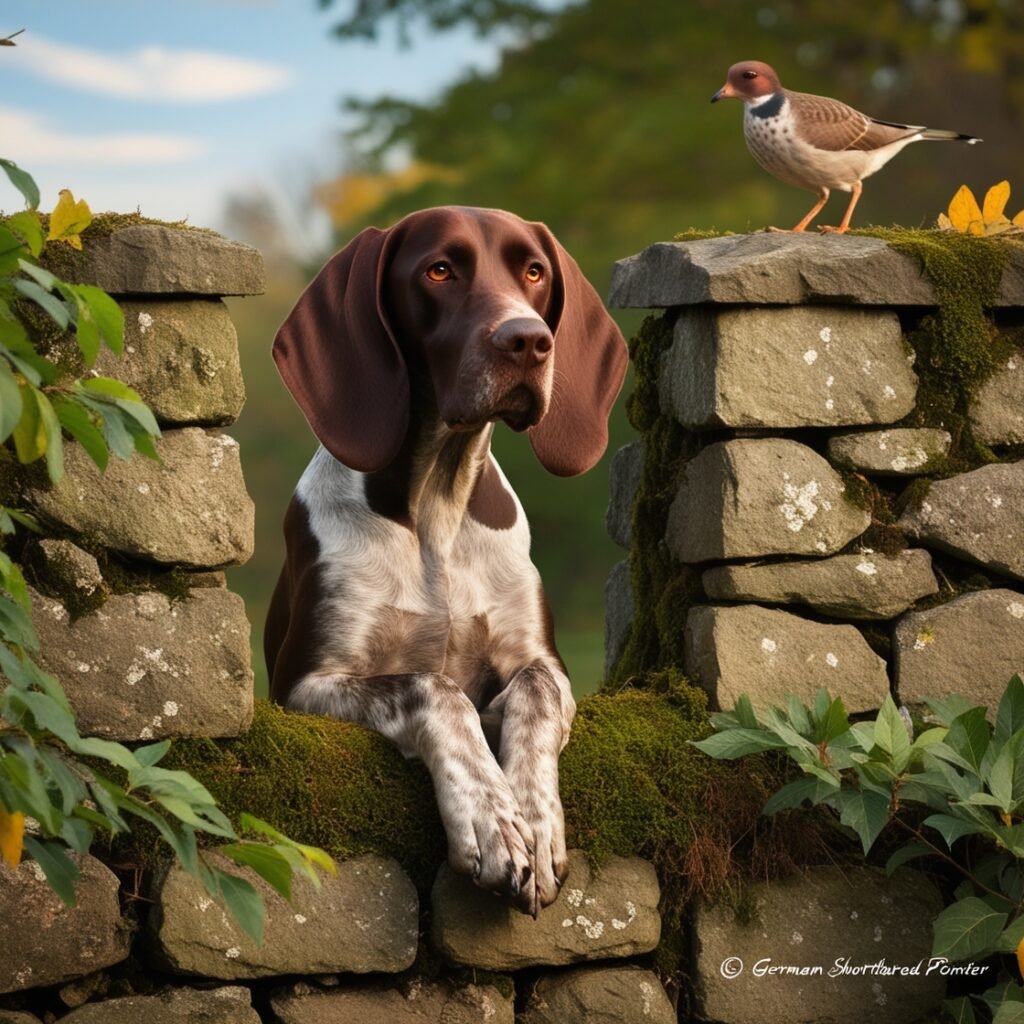
Height:
- Male: 23-25 inches
- Female: 21-23 inches
Weight:
- Male: 55-70 pounds
- Female: 45-60 pounds
Color:
- Solid liver (brown)
- Liver and white (patched, ticked, or roan)
Temperament:
- Energetic
- Friendly
- Intelligent
- Eager to please
Hunting Skills and Abilities:
- Exceptional pointing and retrieving abilities
- Versatile hunter, skilled in both upland game and waterfowl hunting
- Strong nose for tracking
- Agile and fast, capable of covering large areas quickly
Description:
The German Shorthaired Pointer (GSP) is a balanced, athletic dog with a smooth, muscular body. Known for its versatility, this breed is equally adept at hunting on both land and water. With a short, dense coat, the GSP is easy to groom and maintain, making it a favorite among hunters who prefer a low-maintenance dog. Their keen senses, combined with boundless energy, make them excellent companions for active hunters.
Origin and History:
The German Shorthaired Pointer was developed in Germany during the 19th century. Breeders aimed to create an all-purpose hunting dog that could excel in various types of game hunting, from birds to larger game. By crossing the Spanish Pointer with local German breeds, including the Bloodhound and various other pointing breeds, they succeeded in creating a dog with exceptional hunting instincts and a friendly, trainable nature. The GSP quickly gained popularity throughout Europe and eventually reached the United States, where it remains a beloved breed among hunters and families alike.
2. Vizsla :
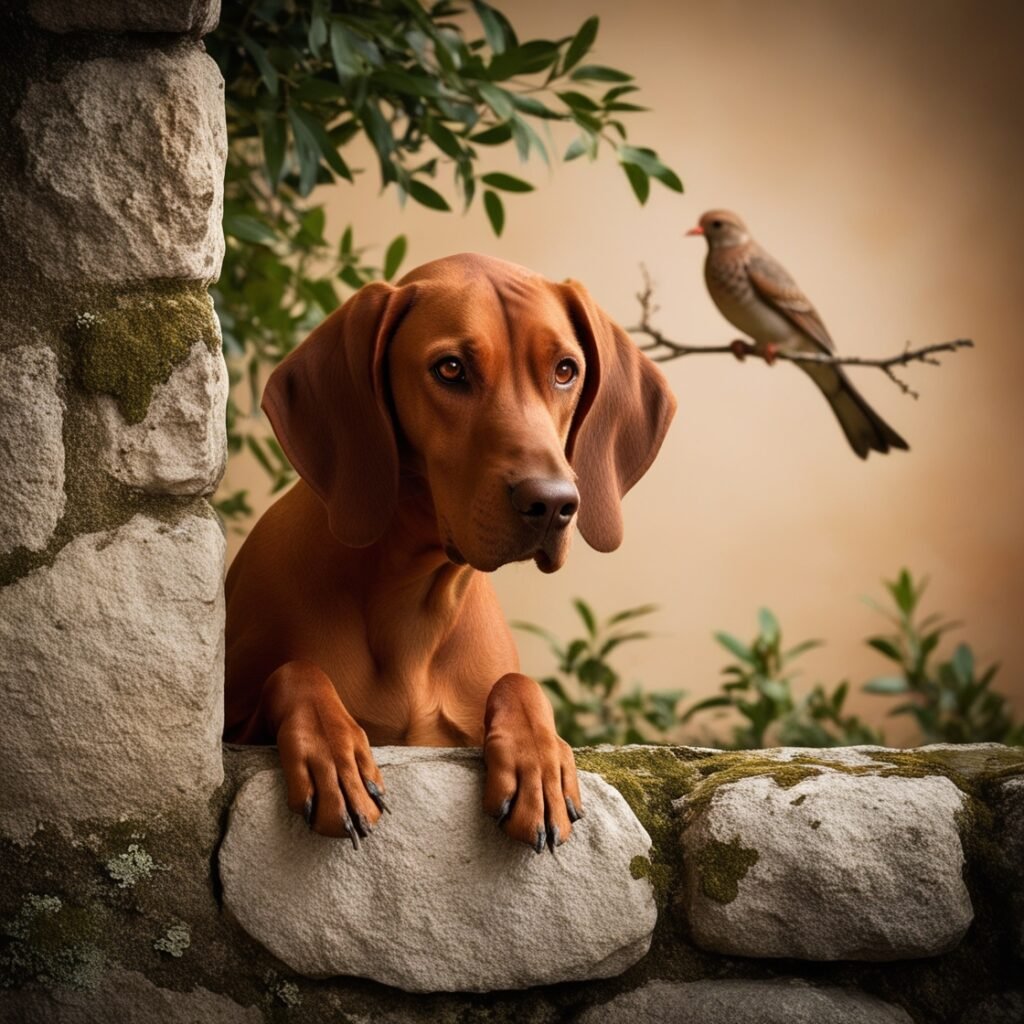
Height:
- Male: 22-24 inches
- Female: 21-23 inches
Weight:
- Male: 55-60 pounds
- Female: 44-55 pounds
Color:
- Golden rust
Temperament:
- Affectionate
- Energetic
- Loyal
- Intelligent
Hunting Skills and Abilities:
- Excellent pointing and retrieving skills
- Agile and fast, perfect for hunting upland game birds
- Strong tracking ability
- Great endurance for long days in the field
Description:
The Vizsla is a medium-sized hunting dog known for its smooth, muscular build and short, smooth coat. With its golden rust color and graceful appearance, the Vizsla is often praised for its beauty. This breed is extremely affectionate and forms close bonds with its owners, often being called the “Velcro dog” due to its desire to stay close to its family. Vizslas are energetic and thrive in active environments, making them ideal for hunters who need a tireless companion.
Origin and History:
The Vizsla originated in Hungary, where it was bred by the Hungarian elite for centuries as an all-purpose hunting dog. Its lineage can be traced back to the 10th century, the breed was used by Magyar tribes for hunting in the vast plains of Central Europe. Over time, the Vizsla was refined as a versatile and reliable hunter, particularly adept at pinpointing and retrieving prey birds. The breed almost became extinct after World War II but was revived by dedicated breeders. Today, the Vizsla is not only a popular hunting dog, but also a beloved family pet, known for its affectionate nature and intelligence.
3. Weimaraner :
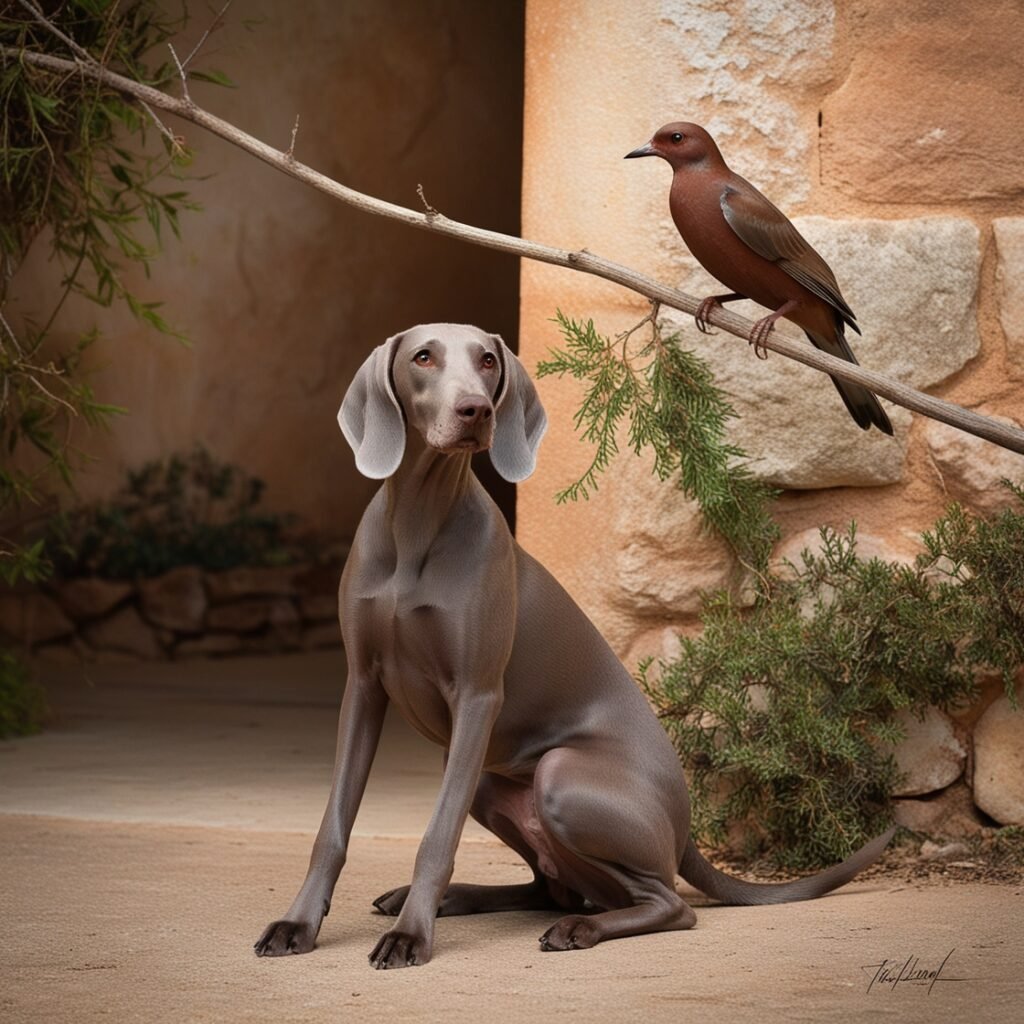
Height:
- Male: 25-27 inches
- Female: 23-25 inches
Weight:
- Male: 70-90 pounds
- Female: 55-75 pounds
Color:
- Silver-gray
- Mouse-gray
Temperament:
- Energetic
- Intelligent
- Loyal
- Strong-willed
Hunting Skills and Abilities:
- Excellent tracking and pointing skills
- Versatile hunter, capable of pursuing large game as well as birds
- Swift and agile, able to cover rough terrain with ease
- Strong endurance for long hunts
Description:
The Weimaraner is a large, athletic dog known for its attractive silver-gray coat and amber or blue-gray eyes. Often called the “Grey Ghost” because of its unique color, the Weimaraner is both elegant and powerful. This breed is highly energetic and thrives in active environments, making it ideal for hunters who need a dog with stamina and versatility. Weimaraners are intelligent and eager to please, but can be strong-willed, requiring consistent training and leadership.
Origin and History:
The Weimaraner was developed in Germany in the early 19th century, primarily by the aristocrats of the Weimar court. These aristocrats tried to create a versatile hunting dog that could handle larger game such as deer and boar, as well as being adept at hunting birds. To achieve this, they crossed various breeds, including the Bloodhound, with other German hunting dogs. The result was the Weimaraner, a breed that quickly gained popularity for its exceptional hunting abilities and loyalty. The Weimaraner was brought to the United States in the 1920s, where it has since become a popular choice for hunters and families. Its combination of beauty, strength and hunting skills makes the Weimaraner an exceptional breed.
4. Beagle :
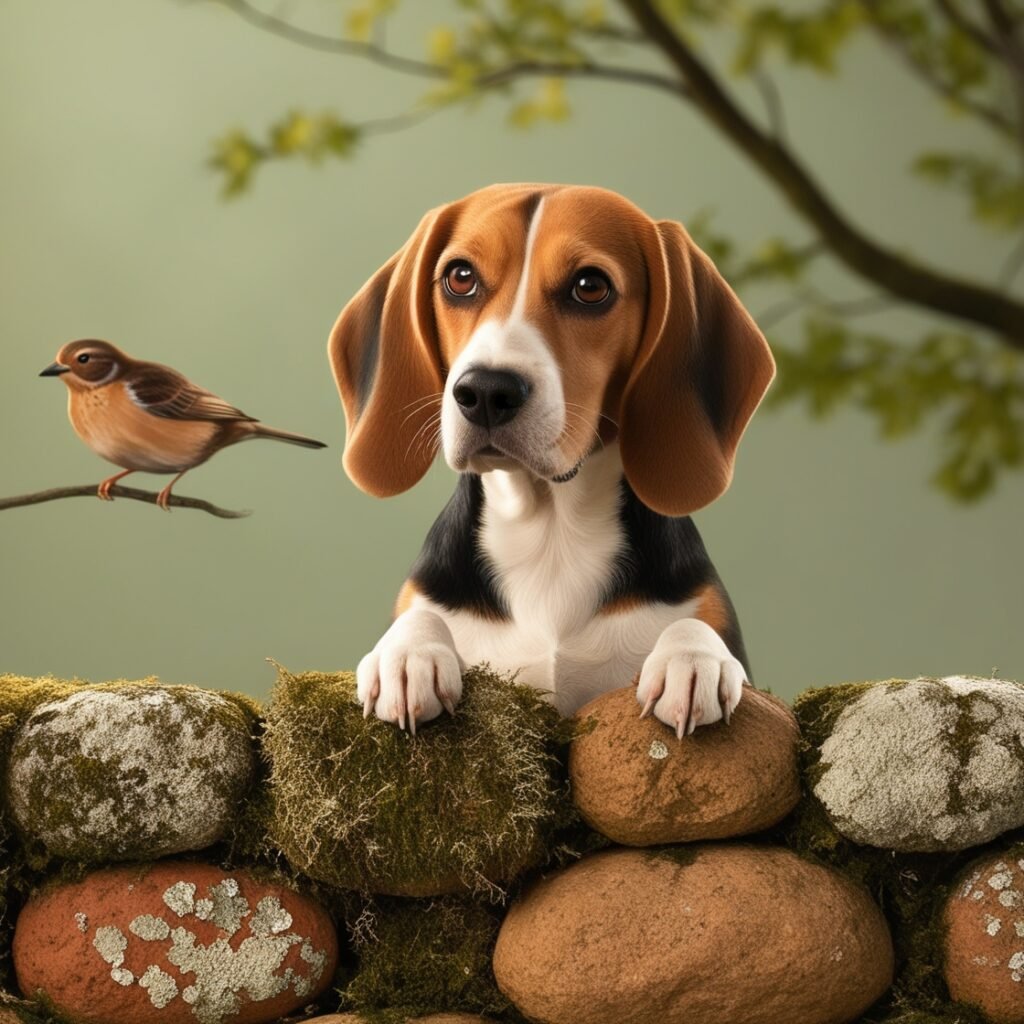
Height:
- Male: 13-15 inches
- Female: 13-15 inches
Weight:
- Male: 20-30 pounds
- Female: 20-30 pounds
Color:
- Tricolor (black, white, and brown)
- Lemon (light tan and white)
- Red and white
- Chocolate tricolor
Temperament:
- Friendly
- Curious
- Playful
- Determined
Hunting Skills and Abilities:
- Exceptional sense of smell, ideal for tracking scents over long distances
- Skilled at hunting small game, particularly rabbits and hares
- Persistent and determined, with a strong drive to follow a scent trail
- Great endurance for long hunting expeditions
Description:
The Beagle is a small to medium-sized dog known for its soulful eyes, floppy ears, and cheerful disposition. With a strong build and short, easy-to-maintain coat, the Beagle is a capable hunter and a beloved family pet. This breed is highly social, loves to be around people and other dogs and has a playful, energetic personality. Beagles are curious and love to explore, often following their noses wherever a scent leads them. Their keen sense of smell and tracking abilities make them excellent hunters, especially for small game such as rabbits.
Origin and History:
The Beagle originated in ancient Greece, but the modern breed was developed in England during the 19th century. Originally bred as a pack hound for rabbit hunting, the Beagle quickly became popular among English hunters due to its exceptional tracking abilities and friendly nature. The breed was brought to America in the 1870s, where it gained popularity as both a hunting dog and companion animal. Today, the Beagle remains one of the most popular breeds in the United States, valued for its hunting skills, loyal temperament, and versatility as a family pet.
5. Pointer :
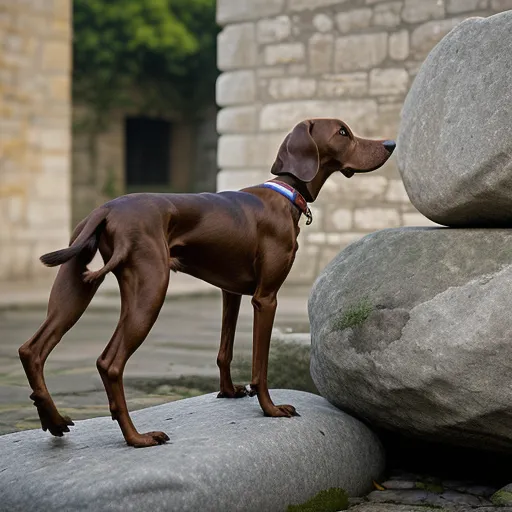
Height:
- Male: 25-28 inches
- Female: 23-26 inches
Weight:
- Male: 55-75 pounds
- Female: 45-65 pounds
Color:
- Liver
- Lemon
- Black
- Orange (with white markings or in a solid color)
Temperament:
- Loyal
- Energetic
- Intelligent
- Friendly
Hunting Skills and Abilities:
- Outstanding pointing abilities, known for “freezing” in place when they locate game
- Highly efficient at locating game birds, particularly quail and pheasants
- Strong endurance for covering large areas in the field
- Quick and agile, capable of navigating difficult terrain with ease
Description:
The Pointer, also often called the English Pointer, is a beautiful and athletic dog with a sleek, muscular body. Known for its distinctive “pointing” stance, where the dog stands still with its nose directed toward the game, the Pointer is the quintessential bird dog. Their short, smooth coat is easy to care for, and their expressive eyes and attentive behavior make them a joy to work with. Pointers are extremely energetic and thrive in active environments where they can exercise both their bodies and minds.
Origin and History:
The Pointer originated in England in the 17th century, developed from various breeds, including the Greyhound, Bloodhound, Foxhound, and various Spaniels. Bred specifically to locate game birds and signal their presence to hunters, the Pointer quickly became a favorite among sportsmen. Its ability to cover vast distances and “point” with precision made it an invaluable asset in the field. The breed was later refined in the 19th century to increase its speed, stamina and pointing abilities. Today, the Pointer is celebrated not only for its hunting ability but also for its loyal and friendly nature, making it a beloved companion for both hunters and families.
6. Rhodesian Ridgeback :

Height:
- Male: 25-27 inches
- Female: 24-26 inches
Weight:
- Male: 85 pounds (average)
- Female: 70 pounds (average)
Color:
- Light wheaten to red wheaten
- Some may have a small white patch on the chest or toes
Temperament:
- Loyal
- Independent
- Protective
- Intelligent
Hunting Skills and Abilities:
- Originally bred for hunting large game, including lions
- Excellent tracking abilities and remarkable endurance
- Strong, agile, and capable of covering rough terrain
- Protective instincts, making them reliable guardians as well as hunters
Description:
The Rhodesian Ridgeback is a large, powerful dog known for its distinctive “ridge” of hair on its back, which grows in the opposite direction to the rest of the hair. This muscular, athletic breed is both an impressive hunter and a loyal family companion. With a short, smooth coat that is easy to maintain, the Ridgeback is suitable for a variety of climates. Despite their hunting origins, Ridgebacks are gentle and affectionate towards their families, although they retain a strong, independent instinct and can be protective when needed.
Origin and History:
The Rhodesian Ridgeback originated in Southern Africa, where it was developed by European settlers in the 16th and 17th centuries. These settlers interbred their dogs with native African dogs, including dogs with a distinctive “ridge” of hair. The breed was further refined in Rhodesia (now Zimbabwe) to create a dog that could hunt larger animals, including lions, as well as be a reliable family protector. The Ridgeback’s courage, stamina, and versatility soon earned it a reputation as a formidable hunting dog. Today, the Rhodesian Ridgeback is appreciated not only for its hunting skills but also for its loyalty, intelligence, and unique appearance, making it a popular choice for families and hunters.
7. Dachshund :
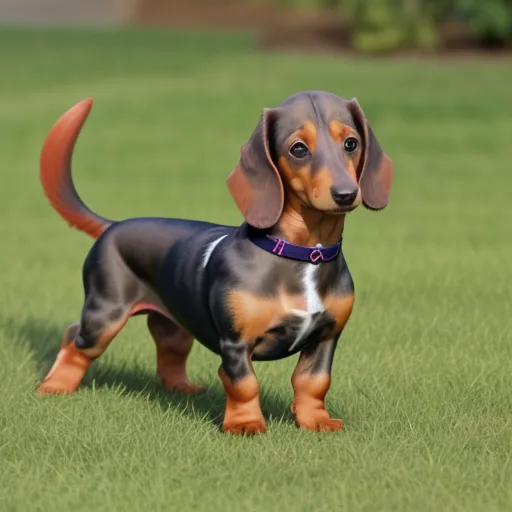
Height:
- Standard: 8-9 inches
- Miniature: 5-6 inches
Weight:
- Standard: 16-32 pounds
- Miniature: 11 pounds and under
Color:
- Various colors including red, black and tan, chocolate, and dapple
- Patterns may include solid, brindle, and piebald
Temperament:
- Lively
- Curious
- Confident
- Affectionate
Hunting Skills and Abilities:
- Originally bred for hunting small game such as rabbits and badgers
- Excellent digging ability to follow prey into burrows
- Strong sense of smell and determination in tracking scents
Description:
The Dachshund, often called the “Wiener dog”, is a small breed with a long body and short legs. This unique construction was designed to help the Dachshund navigate burrows and dens in search of game. Despite their small size, Dachshunds are courageous and energetic, their lively personalities endearing them to many people. Their coat can be smooth, long or wirey and they come in a variety of colors and patterns. Dachshunds are known for their distinctive size, alert expression and strong character.
Origin and History:
The Dachshund originated in Germany, where its name means “badger dog” in German. This breed was developed in the 15th century specifically for small game hunting. Their long bodies and short legs were perfect for digging up badgers and other burrowing animals. Over time, the Dachshund’s role expanded from a hunting dog to a popular companion animal, known for its playful and adventurous nature. The breed achieved widespread popularity in the 20th century and remains a beloved pet today, appreciated for its unique appearance and lively personality.
8. Brittany Spaniel :
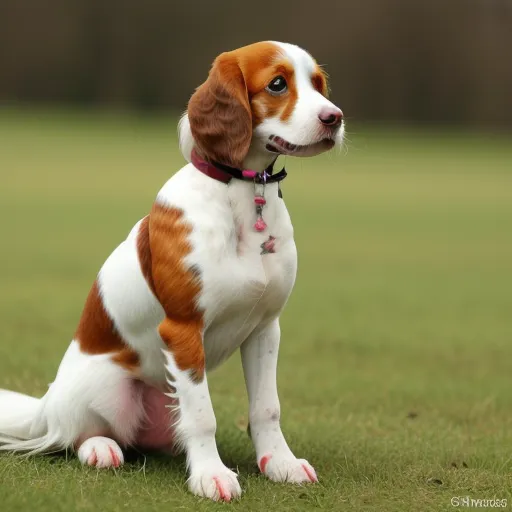
Height:
- Male: 17.5-20.5 inches
- Female: 17.5-20.5 inches
Weight:
- Male: 30-40 pounds
- Female: 30-40 pounds
Color:
- Orange and white
- Liver and white
- Tri-color (orange, white, and liver)
- Black and white
Temperament:
- Energetic
- Friendly
- Intelligent
- Affectionate
Hunting Skills and Abilities:
- Excellent pointing and retrieving abilities
- Versatile hunter, skilled in upland game and waterfowl
- Agile and quick, well-suited for covering large areas
- Strong nose for tracking and locating game
Description:
The Brittany Spaniel, often called the Brittany, is a medium-sized, versatile hunting dog known for its athletic build and friendly demeanor. With a coat that can be wavy or straight and a distinctive pattern of white with orange or liver markings, the Brittany is both functional and attractive. This breed is highly energetic and requires plenty of exercise and mental stimulation. Brittany’s are known for their boundless enthusiasm and affectionate nature, making them excellent companions both on the field and at home.
Origin and History:
The Brittany Spaniel originated in France, where it was developed as a versatile hunting dog in the Brittany region. The breed dates back to the 19th century, its ancestors being a mix of various pointed breeds. Brittanys were initially bred to excel in both pointing and retrieving sports, and their natural hunting abilities quickly made them popular among hunters. The breed was officially recognized in the United States in the early 20th century and has since become a favorite for its hunting skills and affectionate, playful nature. The Brittany remains a favorite breed for both hunting and family pets.
9. Jack Russell Terrier :
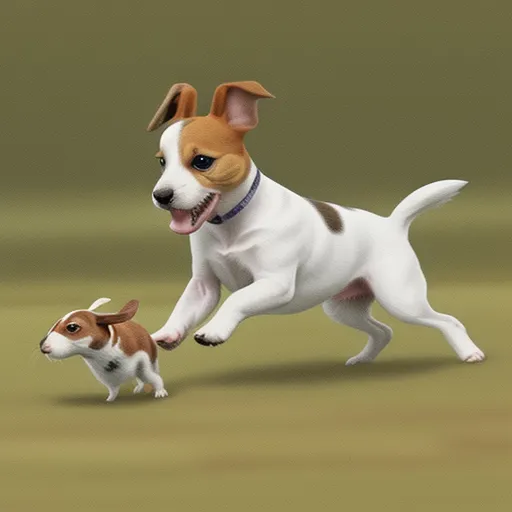
Height:
- Male: 10-15 inches
- Female: 10-15 inches
Weight:
- Male: 13-17 pounds
- Female: 13-17 pounds
Color:
- Predominantly white with black, tan, or brown markings
- May have a variety of patterns including patched or speckled
Temperament:
- Energetic
- Intelligent
- Tenacious
- Friendly
Hunting Skills and Abilities:
- Excellent at hunting small game, such as rats, rabbits, and foxes
- Strong digging ability to pursue prey into burrows
- Keen sense of smell and quick reflexes
- Persistent and determined, making them effective in the field
Description:
The Jack Russell Terrier is a small, sturdy dog with a lively personality and distinctive, energetic demeanor. Known for its compact size and powerful build, the Jack Russell has a smooth, short coat that is easy to maintain. Its alert expression and high energy level make it a dynamic and charming companion. Despite his small stature, the Jack Russell is a powerful and persistent hunter with natural instincts for digging and chasing.
Origin and History:
The Jack Russell Terrier originated in England in the early 19th century. It was developed by the hunting enthusiast Reverend John Russell, whose goal was to create a small but tenacious terrier for hunting foxes. By selectively breeding for qualities such as speed, stamina, and determination, Russell created a breed that excelled at driving off foxes and other small animals. The Jack Russell Terrier soon became known for its hunting skills and lively personality. Today, it is a popular companion for both its energetic nature and effective hunting skills, making it a favorite among hunters and families alike.
10. Foxhound :
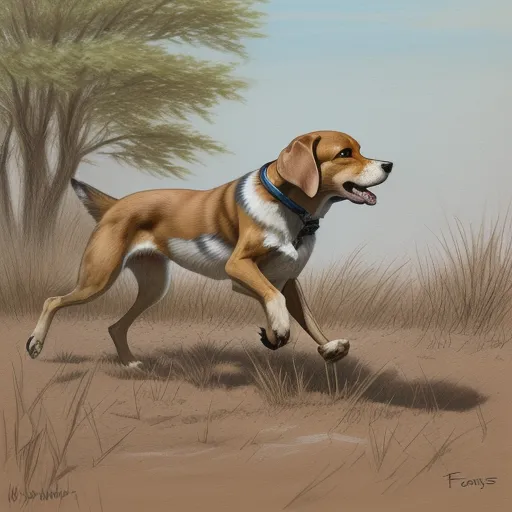
Height:
- Male: 21-25 inches
- Female: 21-24 inches
Weight:
- Male: 60-75 pounds
- Female: 60-65 pounds
Color:
- Tricolor (black, white, and tan)
- Bicolor (usually black and tan, or liver and tan)
- Some may be solid colors or have various markings
Temperament:
- Energetic
- Friendly
- Determined
- Loyal
Hunting Skills and Abilities:
- Excellent scenting abilities, ideal for tracking foxes and other game
- Strong endurance, capable of following a scent trail for long distances
- Agile and fast, suited for navigating rough terrain
- Effective in both pack and solo hunting situations
Description:
The Foxhound is a medium to large breed with a sleek, athletic build and a short, dense coat that is easy to care for. Known for its impressive stamina and keen sense of smell, the Foxhound is a powerful and reliable hunting dog. Its friendly and outgoing nature makes it a good companion both in the field and at home. Despite its hunting origins, the Foxhound is also suitable for family life, provided it receives adequate exercise and mental stimulation.
Origin and History:
The Foxhound originated in England, where it was developed in the 16th century for fox hunting. The early Foxhound was bred from a mixture of breeds, including Greyhound and Bloodhound, to produce a dog with a strong nose, high stamina, and the ability to track foxes in a variety of terrain. The breed was refined over the centuries and became a staple of fox hunting packs. Today, Foxhounds are still used in hunting, but they are also appreciated for their friendly nature and suitability as family pets.
Why Choose a Short-Haired Hunting Dog?
Choosing a short-haired hunting dog can offer many benefits, especially for those who appreciate both functionality and ease of care. Short-haired hunting dog breeds, such as the German Shorthaired Pointer or Vizsla, offer practical benefits that enhance the hunting experience. Their smooth, low-maintenance coats are easy to groom and less prone to collecting debris, making them ideal for hunting in a variety of environments.

Short-haired breeds are also known for their agility and stamina. Their streamlined coats help them stay cool and move faster in dense bushes or open fields, allowing them to cover more ground efficiently. Additionally, these dogs shed less hair than their long-haired counterparts, which means less cleaning and grooming for you.
Additionally, the short hair reduces the risk of tangles and tangling, making post-hunt care quicker and easier. For hunters who value a combination of performance and practicality, short-haired hunting dogs provide a reliable and straightforward option. Their smooth coats and efficient hunting abilities make them a top choice for those who want a functional, low-maintenance companion in the field.
Health Considerations for Short-Haired Hunting Dogs ;
Health considerations for hunting short-haired dog breeds are generally straightforward, but there are still important factors to keep in mind. Short-haired hunting dogs, such as the German Shorthaired Pointer and Vizsla, benefit from wearing coats that are less prone to matting and matting, making grooming easier and reducing skin irritation. However, their short coat also means they have less natural protection against extreme temperatures, so it is important to ensure they are well protected from both cold and hot weather.
Skin health is another important consideration. Short-haired breeds can be prone to skin allergies and irritations, especially if they are exposed to harsh environments or have sensitive skin. Regular checkups and a healthy diet can help manage these issues. Additionally, because these dogs often hunt in rough terrain, they may be at risk for bites, scratches, or parasites. It is important to keep their paws and coat clean and check them regularly for signs of injury or infection.
Overall, while short-haired hunting dogs are generally strong and easy to maintain, paying attention to their skin and environmental exposures can help ensure they stay healthy and perform well in the field .
Caring for a Short-Haired Hunting Dog ;
Short-haired hound breeds are relatively simple to care for but require attention to ensure their well-being. These breeds, like the German Shorthaired Pointer or Vizsla, have smooth coats that are easy to manage, but they still require regular care to stay healthy and comfortable.
Firstly, their short hair means they are less likely to tangle, so grooming requires minimal brushing to remove loose hair and dirt. However, it is important to keep their coat clean and dry to prevent skin irritation. Regular bathing may be necessary, especially if they are hunting in muddy or rough terrain.
Because short-haired dogs have less natural insulation, they must be protected from extreme temperatures. Provide a comfortable doghouse or shelter for cold weather and make sure they have access to shade and fresh water during hot days.
Additionally, regular health checkups are also important. Check their skin regularly for any signs of cuts, parasites or irritation. Proper nail trimming and dental care are also important for their overall health.
In summary, while short-haired hunting dogs are low-maintenance in terms of coat care, they still need regular attention to their environment and health to ensure they remain happy and healthy companions.
** Conclusion :-Hunting dog breeds short hair **
In conclusion, short-haired hunting dog breeds offer a blend of practicality and performance that makes them a popular choice among hunters. Their smooth coats are easy to maintain, require minimal care and are less prone to tangles and knots. This simplicity in coat care is complemented by their impressive hunting abilities, allowing them to cover large areas efficiently and effectively.
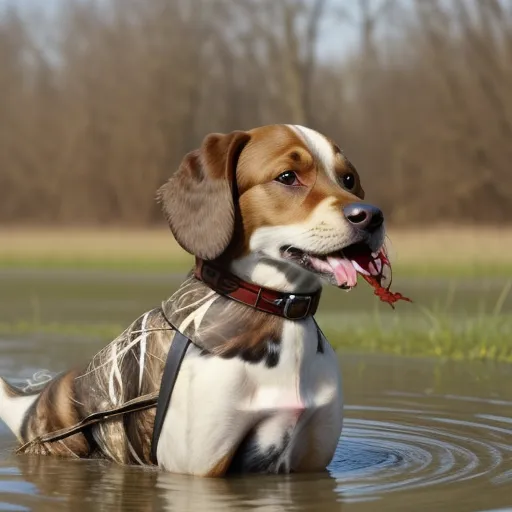
Short-haired hunting dogs such as the German Shorthaired Pointer and Vizsla also benefit from their ability to remain agile and quiet in a variety of environments. However, it is important to remember that their short coats provide less insulation, so protecting them from extreme temperatures and ensuring regular health checks are important for their well-being.
Overall, these breeds combine the benefits of low-maintenance care with exceptional hunting skills, making them reliable and easy-to-care for companions. Whether you’re in the field or at home, short-haired hunting dogs offer a harmonious balance of performance and ease, proving to be both effective hunters and devoted family pets.
You might be interested in reading this post as well Hound Dog Breeds large
“Streamlined Companions: The Best Short-Haired Hunting Dog Breeds for the Modern Hunter” ** Introduction to Short Haired Hunting Dog Breeds ** Short-haired hunting dog breeds are a top choice for hunters who value efficiency and ease of care. These dogs are known for their smooth, low-maintenance coats, making them ideal companions in the field. Whether…
You can read this posthttps://tomeshnews.co.in/white-large-dog-breeds/?amp=1
What are the benefits of owning a short-haired hunting dog?

Short-haired hunting dogs are generally easier to tame and handle, as their coats do not tangle or tangle easily. Their smooth coats also help them stay cool during strenuous activity, making them ideal for hunting in a variety of weather conditions.
Do short-haired hunting dogs need special care?

While their coats are low-maintenance, short-haired hunting dogs still require regular check-ups for skin health, protection from extreme temperatures, and routine grooming to remove loose hair and debris.
How do I protect my short-haired hunting dog in extreme weather?

For cold weather, provide a warm shelter and coat if necessary. In hot weather, ensure they have access to shade, fresh water, and avoid overexposure to the sun to prevent overheating.
Are short-haired hunting dogs prone to skin problems?

Short-haired breeds can experience skin allergies and irritations, especially if they come into contact with allergens or harsh environments. Regular skin checks and a healthy diet can help manage these issues.
What is the best way to groom a short-haired hunting dog?

Grooming involves regular brushing to remove loose hair and dirt. Occasional baths will keep their coat clean, and regular checks for parasites or skin conditions will help maintain their overall health.

